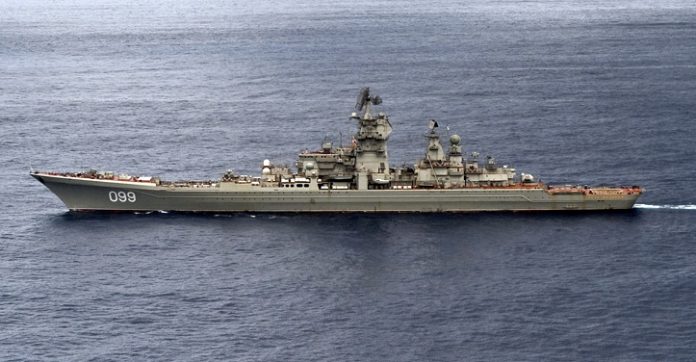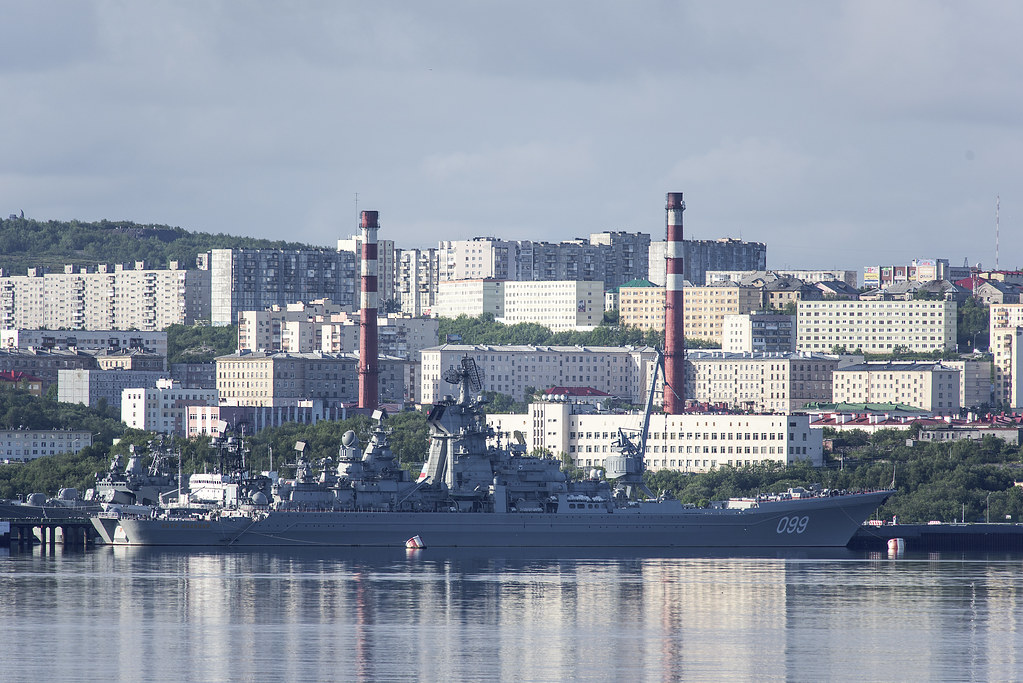
As the pages of maritime history turn, one of Russia’s most formidable nautical behemoths, the Kirov-class nuclear-powered guided-missile battlecruisers, stands at a crossroad that could lead to their retirement after decades of service. Known as Project 1144 Orlan, these vessels, the largest and heaviest surface combatants after aircraft carriers, have been a symbol of Russian naval power since their Cold War inception in 1980.

The potential phase-out of these naval titans is a testament to the shifting tides of military strategy and the harsh realities of technological advancement and upkeep costs.
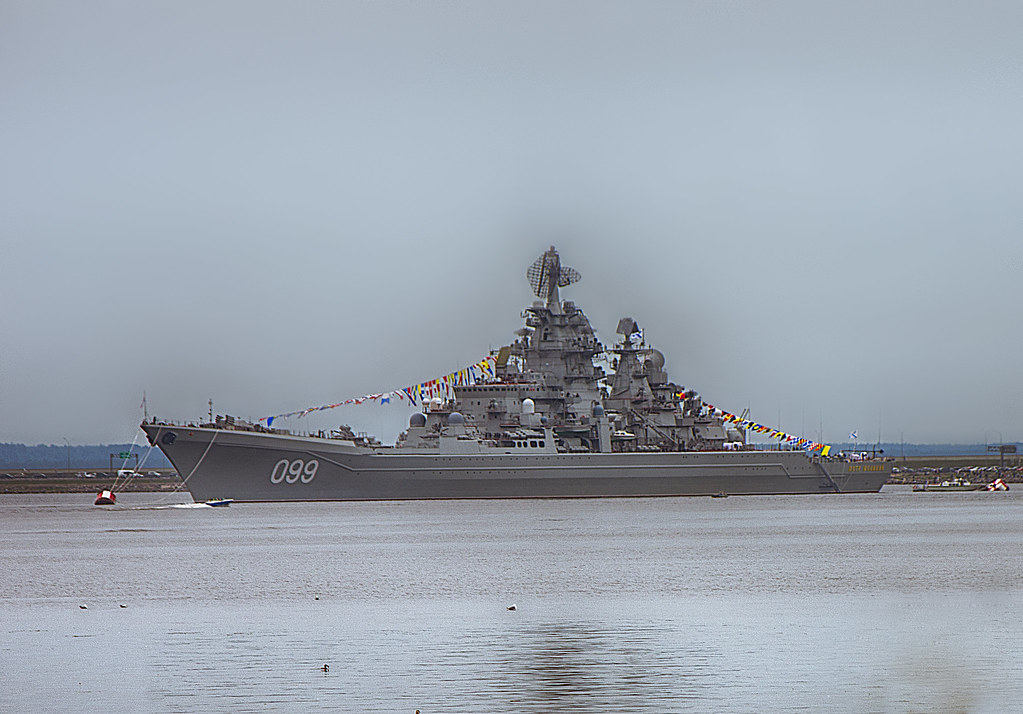
At the heart of the Kirov-class’s prowess lies the sole active ship, the Pyotr Velikiy. She cuts an imposing figure, measuring 827 feet long with a 94-foot beam, displacing a mammoth 28,000 tons.

Her capabilities are as staggering as her size, with a nuclear marine propulsion system that generates 140,000 horsepower, allowing her to reach speeds of up to 32 knots. Designed to counter U.S. Navy submarines and carrier strike groups, the Kirov class boasts an armory of anti-submarine and anti-ship missiles, including the SS-N-14, the P-700 Granit, and the future 3M22 Tsirkon hypersonic missiles.

Amid escalating maintenance costs and the need for extensive refitting, the Russian Navy contemplates the Pyotr Velikiy’s decommissioning. A TASS report suggests the Navy may consider the ship’s upkeep too burdensome, given its current condition and the modernization required to remain afloat in today’s naval arms race.
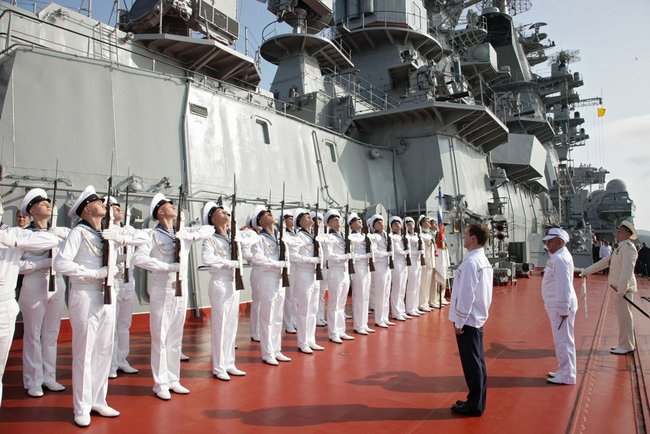
The decision appears to reflect a broader strategic pivot in Russian maritime doctrine, favoring smaller, more versatile vessels like frigates and corvettes.

Despite the looming possibility of the Pyotr Velikiy’s retirement, the Kirov class’s legacy remains intact, courtesy of the Admiral Nakhimov’s ongoing refit. The ship is expected to rejoin the Russian fleet between 2024 and 2025, armed with the latest sensors, electronics, and a navy version of the S-400 air defense system. This move signals a continued Russian commitment to naval power, albeit in a more cost-effective and technologically contemporary form.
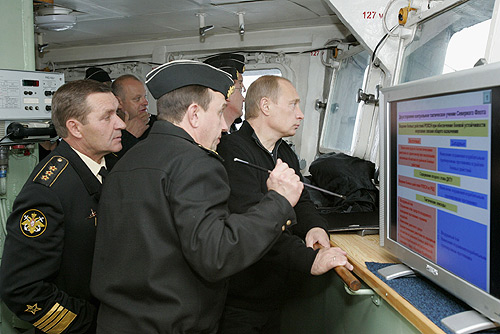
The Kirov class’s story isn’t solely about military might; it’s also a narrative of geopolitical shifts and financial pragmatism. The Russian Navy’s source revealed that the experience of modernizing the Admiral Nakhimov demonstrated the financial strain such projects can impose. Consequently, the choice to potentially retire the Pyotr Velikiy aligns with the global trend of balancing formidable firepower with sustainable operational costs.

Despite their potential departure from active service, the Kirov-class battlecruisers remain emblematic of a bygone era, a time when the superpowers flexed their naval capabilities in a show of strategic brinkmanship.
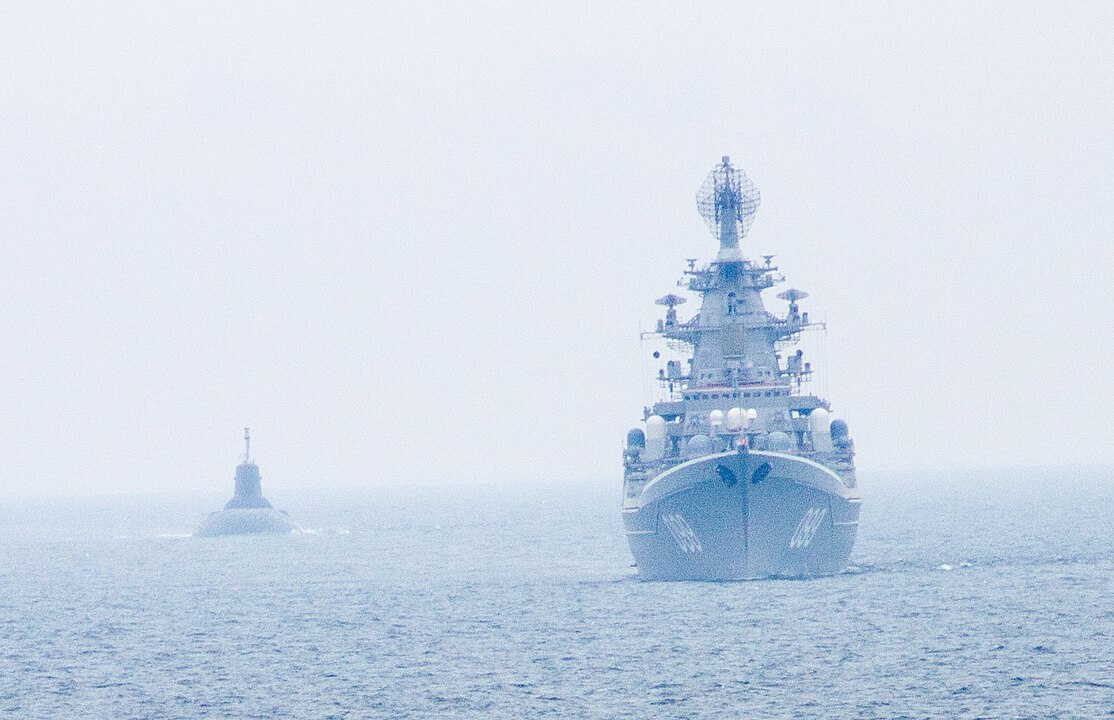
Their rare breed — nuclear-powered surface combatants — stands as a reminder of the enduring quest for dominance over the seas. The sunset of the Kirov class marks the end of an era, but also the dawn of a new chapter in naval warfare, where agility, technology, and cost-efficiency steer the ship of state.
Relevant articles:
– Russia’s Nuclear-Powered Battlecruisers Might Need to Retire Like Battleships, The National Interest
– Russia’s Kirov-Class Battlecruisers Might Be Retired For Good, The National Interest
– Russian Navy Eyes Early Retirement for Rare Nuclear Cruiser, The Maritime Executive
– Russia Announces Retirement Of World’s Only Nuclear-Powered Battle Cruiser, Pyotr Veliky, Marine Insight
